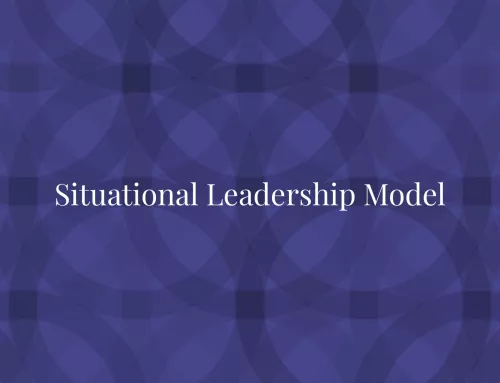We all know the phrase by the philosopher Heróclito de Efeso:
the only constant is change
This phrase that still makes perfect sense, especially today. If in a VUCA world we had ambiguity and instability, with BANI we have chaos and the misunderstanding of how all this chaos came about. VUCA appeared to function as a useful compass in a world that was increasingly difficult to understand. But the pandemic and the biggest health crisis in decades have mixed everything up once more, generating new feelings that are again destabilizing for people. This is where the BANI concept comes in.
VUCA
Origins
First described in 1985 by economists and university professors Warren Bennis and Burton Nanus in their book Leaders. The Strategies For Taking Charge, the challenges posed to management and leadership by various external factors and what the consequences are for corporate leadership. In the early 1990s, the US Army War College’s General Maxwell Reid Thurman responded to the collapse of the USSR with VUCA. With the demise of the Eastern Bloc as the one enemy, the challenge was to find and implement new ways of seeing and responding under conditions of VUCA. – V – Volatility: lack of stability and predictability
– U – Uncertainty: lack of ability to foresee what major changes might be coming
– C – Complexity: moving in ways experts have never seen before
– A – Ambiguity: problems in understanding what is the best course of action
Obsolescence
The term VUCA was coined almost 30 years ago by management advisors and popularized by military strategists. This concept dominated in the business world and board rooms during the last 20 years. It has been useful to describe the times we have lived in so far and helped us to understand the first impact of the pandemic situation. However, it is now starting to become increasingly obsolete due to the speed of change we are all experiencing.
BANI
Jamais Cascio presented the recent and updated framework – BANI – during an IFTF (Institute of The Future) event. In Cascio’s view, the tools of the VUCA framework don’t help us to understand what will happen. According to Jamais Cascio, the person behind the BANI model:
Situations in which conditions aren’t simply unstable, they’re chaotic. In which outcomes aren’t simply hard to foresee, they’re completely unpredictable. Or, to use the particular language of these frameworks, situations where what happens isn’t simply ambiguous, it’s incomprehensible.
This is because the model describes the present reality. Cascio proposes that a more helpful concept to understand the future is BANI.
B – Brittle
Easy to shatter, subjected to a total and sudden failure. It is the idea is that we are susceptible to catastrophe at any time. This arises from efforts to maximize efficiency, to wring every last bit of value – money, power, food, work – from a system. Living in an interconnected world means that fragilities that were once restricted to specific places and groups can now cause ripples effects around the world. This condition of fragility can impact the security of enterprises, which runs the risk of bankruptcy and transform the way the market behaves. Furthermore, businesses built on fragile foundations can fall apart overnight. Recent times have shown us that the world is highly fragile. A virus can suddenly appear, a competitor can change the logic of the market or a failure on the other side of the world can affect our continent. In this context, jobs are no longer guaranteed, positions are not synonymous with security and career changes are normal. There is an interconnectedness to things and if one part fails, the ripple effect might be disastrous to a wider system failing. Something brittle is apparently strong and solid, but it can fall apart quickly because it lacks resilience. It seems to keep working very well right up to the point of collapse, and with the illusion of stability, we haven’t prepared a cushion for failure and may find ourselves unable to cope with the disaster. Sometimes a single, overlooked point of weakness inside the system can cause brittleness.
A – Anxious
Fear that any choice we can make might be the wrong one. There are now so many uncertainties (thanks to our VUCA world) that they generate immense anxiety and a constant feeling of impotence. Everyone has started to feel at least a little of the 21st century disease, which involves fear over what could happen or go wrong regardless of what we do. An anxious world is one in which we are always hitting refresh to update the news and see what horror shows up next. This is the characteristic anxiety we also find represented by the acronym – FOMO that refers to fear of missing out. In other words, it is the fear of being left out of whatever is happening or of losing something. One example is the constant need many feel to be up-to-date on social media in real-time, all day long. Anxiety reflects the anguish and stress of our present times, accentuated by insecurities in relation to health and the risk of contracting COVID-19. Anxiety is one of the most present symptoms today, not just in people’s personal lives but in business as well. We are living on the edge, which creates a sense of urgency, which guides decision-making. The certainty that systems are fragile makes us anxious. We need to make decisions quickly, as any minute lost seems to leave us behind. In a BANI context, the difference between success and failure may lie in the response time to the weaknesses we face. When we are anxious, any choice can be potentially disastrous. We are constantly tense when experiencing anxiety, and we wait and watch our screens for the next bad news. Anxiety leads us to a state of passivity, since we fear to make the wrong choice and make things worse. Therefore, we tend to delay decisions and actions, and this can in turn lead to a psychological state of depression.
N – Nonlinear
Disconnection between cause and effect in time, proportion, perception. What was complex became, in turn, nonlinear, without a single meaning, leading to multiple destinations. The systems of cause and effect have become disconnected or disproportional. This leads us directly to the pandemic. It is impossible to have predicted how the emergence of a virus in one part in Asia could cause all the (unfortunately tragic) events we have seen all over the world. The concept of flattening the curve of COVID-19 cases is inherently a war against non-linearity. In this period, we live in a world whose events seem disconnected and disproportionate. Without a well-defined and standardized structure, it is not possible to make structured organizations. In a nonlinear environment a small decision can have devastating consequences. A great effort may not bring great results. When losing linearity, the ups and downs are not proportional. We learned that consequences of any cause can emerge quickly, or it can take months for results to appear. Nothing else is certain, and this includes strategic planning, as it is clear that it must be adaptable to the circumstances. In a nonlinear world we don’t see a clear and obvious connection between cause and effect. The effect can be disproportionate in comparison to the cause that generated it, and therefore much bigger or smaller than we expected. Similarly, the result of an action might come with a huge delay or not be visible at all. Moreover, the effect can reinforce the cause that generated it in a circular way, the connections inside this process might not be clear and it may be impossible to identify a clear start and a clear end.
I – Incomprehensible
Extremely difficult, if not impossible, to understand. Attempts to find all the answers no longer make so much sense. Obsessive analysis of the data could overwhelm any person’s ability to understand it, as well as make it hard to distinguish signal from noise. At this point, the BANI concept enters the realm of resignation. According to BANI, since it is often difficult to try to translate or understand the situation, considering it undecipherable may be what is needed in order to take a step forward and try to find one’s own path. Misunderstanding is generated when we find answers, but the answers don’t make sense. So, we need to understand that we don’t have control over everything. We try to find an answer for everything and we rely on data and on the countless information we have at hand. However, overload results in incomprehensibility. Asking how did this happen? seems to be natural. However, the answer is not that obvious. Our concepts and ideas change all the time. Everything happens so fast that it seems more and more that we understand less. We experience an incomprehensible situation when we struggle to find answers and/or the answers are not convincing and/or we can’t really use those answers to drive further actions. We usually try to overcome this problem by increasing the volume of data available, but this can be counter-productive; the more we try to understand an incomprehensible situation, the more we feel overwhelmed.
Similarities
Both VUCA and BANI offer us frameworks that we can use to decode what is happening around us. Subsequently, we can cope with external events. Both models are meant as descriptive acronyms that prove to frame for what people are already experiencing. In that sense, putting a label on a feeling and consequently making it a little more tangible. Humans love labels. We need to categorize information in order to work so having labels we can use for discussions helps us to process and as a consequence getting rid of labels that are not helping us. We can use the same acronyms to describe the ability needed to respond to each element. For example, in the case of VUCA, to deal with Volatility, Uncertainty, Complexity and Ambiguity, the abilities we need are Vision, Understanding, Clarity, Agility. In reality though, these abilities are not so easy to find and they sound a bit simplistic and maybe even tautological.
Dealing with BANI
Turning instead to the BANI model, here is my proposal for a complementary set of attitudes inspired by BANI, based on my experience.
B – Brittle
If something is brittle, we need to show capacity and resilience. Something brittle can be managed with a solid B-Plan. Always prepare an alternative, even for something that is apparently working well. In this context of fragility, a great way to adapt and grow is by strengthening your teams. Seeking a culture of collaboration, adopting well-distributed structures, and investing in training are tools that can help make your organization more resilient. Implementing a collaboration culture can increase the communication and transparency between individuals, teams, departments, and branches.
A – Anxious
If we feel Anxious, we need empathy and mindfulness. The best way to cope with Anxiety is raising Awareness. We can’t manage something if we can’t control it, and we can’t control what we are not aware of. Dealing with anxiety requires more company empathy. Training employees in soft skills, which will become increasingly essential in times to come, can also help.
N – Non-linear
If something is Non-linear, it requires context and adaptability. A Nonlinear phenomenon must be approached with No expectation. We should maintain fresh eyes and a candid, open approach to cope with events, people and technology. In a non-linear world, rigid plans tend to be a burden on business. Companies that don’t innovate and rely only on “proven” methods of doing things often find themselves behind the competition and can’t adapt quickly enough to changes in their environment.
I – Incomprehensible
If something is Incomprehensible, it requires transparency and intuition. When something is incomprehensible we can’t wait to fully explore what’s happening before making a decision, so we must develop our Intuition and rely on it. Misunderstanding can be addressed simply through the use of technologies like Artificial Intelligence, Big Data, and Data Science.
…




